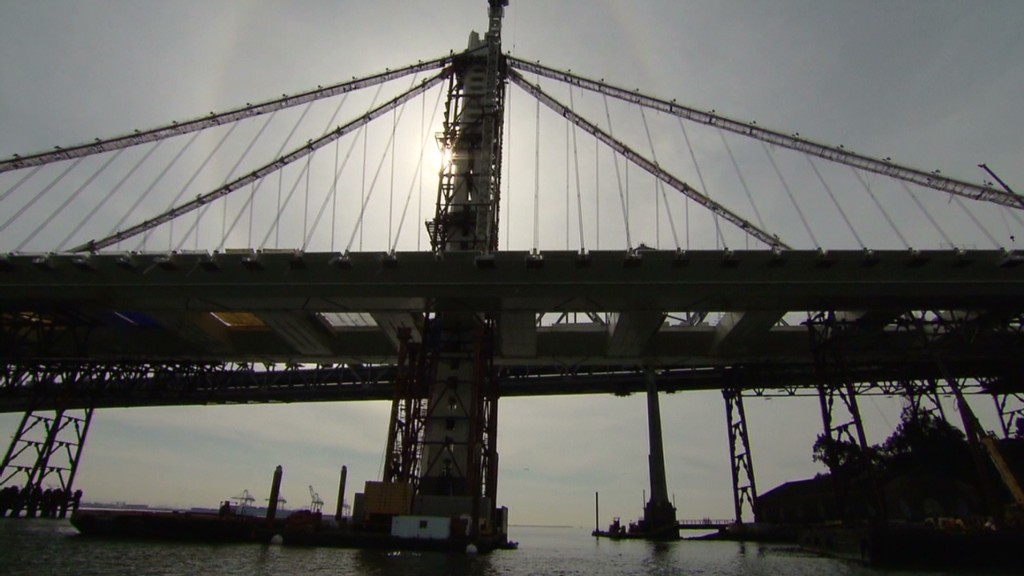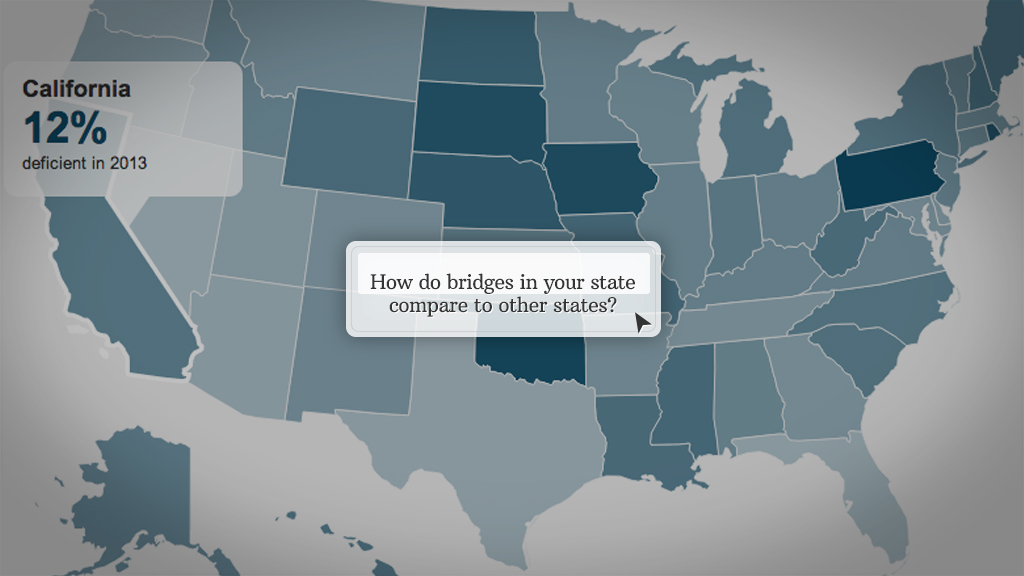America's bridges are getting old. Most of them were built in the 1950s, and they're beginning to show their age.
One in nine bridges in the United States is structurally deficient, according to a report released Wednesday by Transportation For America.
Some of the worst bridges are found in the Northeast. Bridges there tend to be among the oldest in the nation and they've been battered for decades by the region's frequent ice and snow.
Pennsylvania is the state with the most structurally deficient bridges in the nation, followed by Oklahoma, Iowa, Rhode Island and South Dakota. In those states more than 20% of the bridges are deficient. That doesn't necessarily mean they are unsafe, but that they need significant maintenance or replacement, according to Transportation For America.
More than 66,000 bridges nationwide are deficient, with an average age of 65. In 10 years, one in four bridges will reach age 65 -- when it's far more likely for a bridge to be deficient. On average, American bridges are 43 years old. The average designed lifespan of a bridge is 50 years old.
Related: Nation's drinking water system needs $384B upgrade
Securing the money to repair or replace thousands of bridges is a problem. Revenues from the federal gas tax are declining as cars get better gas mileage. As this revenue declines, both the federal and state governments must turn to other sources for funding -- sources that have become increasingly scarce over the last few years.
Plus, bridge funding must compete with the need to repair other aging road and transit networks, according to the report.
The Federal Highway Administration estimates that repairing the deficient bridges would cost $76 billion, according to the report.
"It is always cheaper to maintain the bridges upfront rather than dealing with an emergency situation," said Lynn Peterson, Washington State Secretary of Transportation.
Congress passed a law last year that eliminated a dedicated repair fund for local and state bridges, leaving nearly 90 percent of deficient bridges without access to federal funds, as they don't belong to the National Highway System (NHS), and are ineligible for the funds. Most funding goes to the 10 percent of deficient bridges on the NHS, which includes the interstates and most larger state highways.
"Congress is taking a gamble," said James Corless, director at Transportation for America.
The federal investment doesn't match the need right now, Corless said. Congress hasn't raised the gas tax since 1993. The federal gas tax -- currently 18.4 cents per gallon -- is scheduled to be renewed in September 2014.

There has been a steep decline in bridge repair. Three times more bridges were repaired between 1992 and 1996 than over the last four years.
Bridges in Oklahoma, New York and Louisiana are seeing the greatest amount of deterioration, with each adding more than 50 deficient bridges since 2011.
Related: America's infrastructure is finally getting a bit better
On the bright side, many states managed to reduce their total number of deficient bridges. Pennsylvania repaired 8% of its below-standard bridges since 2011.
Deficient bridges don't mean they pose immediate threats to public safety, Corless said. But to keep the bridges in good condition, he says states need to prioritize capital spending on infrastructure.



